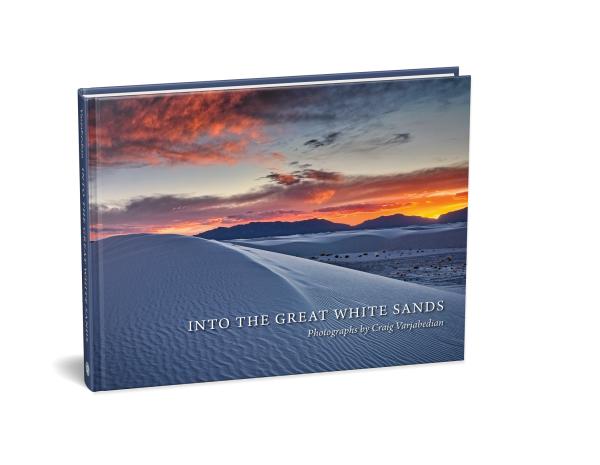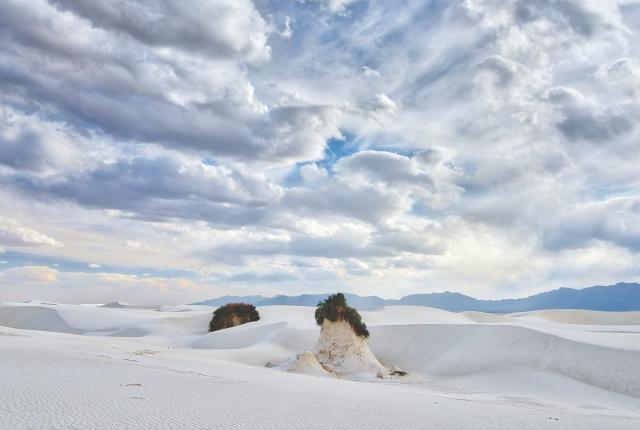THE MILKY DUNES ETCHED in wavy lines stand out in the foreground. Falling sharply away, a dune’s decline becomes shrouded in shadow. A pale hue delineates the horizon as it gives way to the San Andres Mountains, in the distance.
“I want people to take a moment and stand there with me,” says photographer Craig Varjabedian of Pastel White Dunes, one of 91 images in his book Into the Great White Sands (University of New Mexico Press). “I know a picture of mine is successful if the image itself becomes a window to take me back to whatever it is I photographed.”
Read More: The Wonders of White Sands National Park
Varjabedian visited White Sands every two weeks for five years for the book. Often, he would head into the bone-toned dunes at dawn, when the air is cooler and the pink aura of sunrise saturating the horizon makes the impact of the landscape even greater.
“It’s not just the iconography,” says Varjabedian, whose work has been exhibited and collected by museums throughout the country, including the Albuquerque Museum. “It’s also that the photograph reveals a sense of the light and a sense of the air and reveals a sense of the temperature. You just sort of feel it.”
Read More: Best Hiking Trails at White Sands
Photographing the area since the early 1980s, he has come to know it like few others. Rangers have showed him the sand’s hidden treasures, like mammoth tracks, a downed fighter jet, and a decaying vintage automobile. It is also the place Varjabedian returns to when he needs inspiration, or, as his wife puts it, to find his smile. “There’s a wonderful regenerative quality about White Sands,” he says. “It nourishes my psyche.”

Into the Great White Sands. Photograph by Craig Varjabedian.
Photography Tips
Varjabedian, who teaches a variety of photography workshops, offers a few of his tips for capturing your best shot.
Get out as early or as late in the day as possible. “When the sun is at high noon, you can’t see the landmarks very well. You really need the shadows to see the shape of the dunes. The sunsets at White Sands are the most beautiful I have ever seen.”
Try to shoot just a piece of the magic. It’s a lesson Varjabedian learned while working on his 2009 book Ghost Ranch and the Faraway Nearby (UNM Press). “Georgia O’Keeffe talks about how vast that Abiquiú landscape was,” he says. “It was just too big to paint. So she started to paint little pieces of it that could potentially speak for the greater whole.” He applied that to White Sands. “If you try to capture everything, you have a lot of information but no real sense of detail or space.”
Use the HDR setting when taking pictures with your phone. “This will allow users to capture so much more of the light and shadows of this brilliantly illuminated landscape.”


